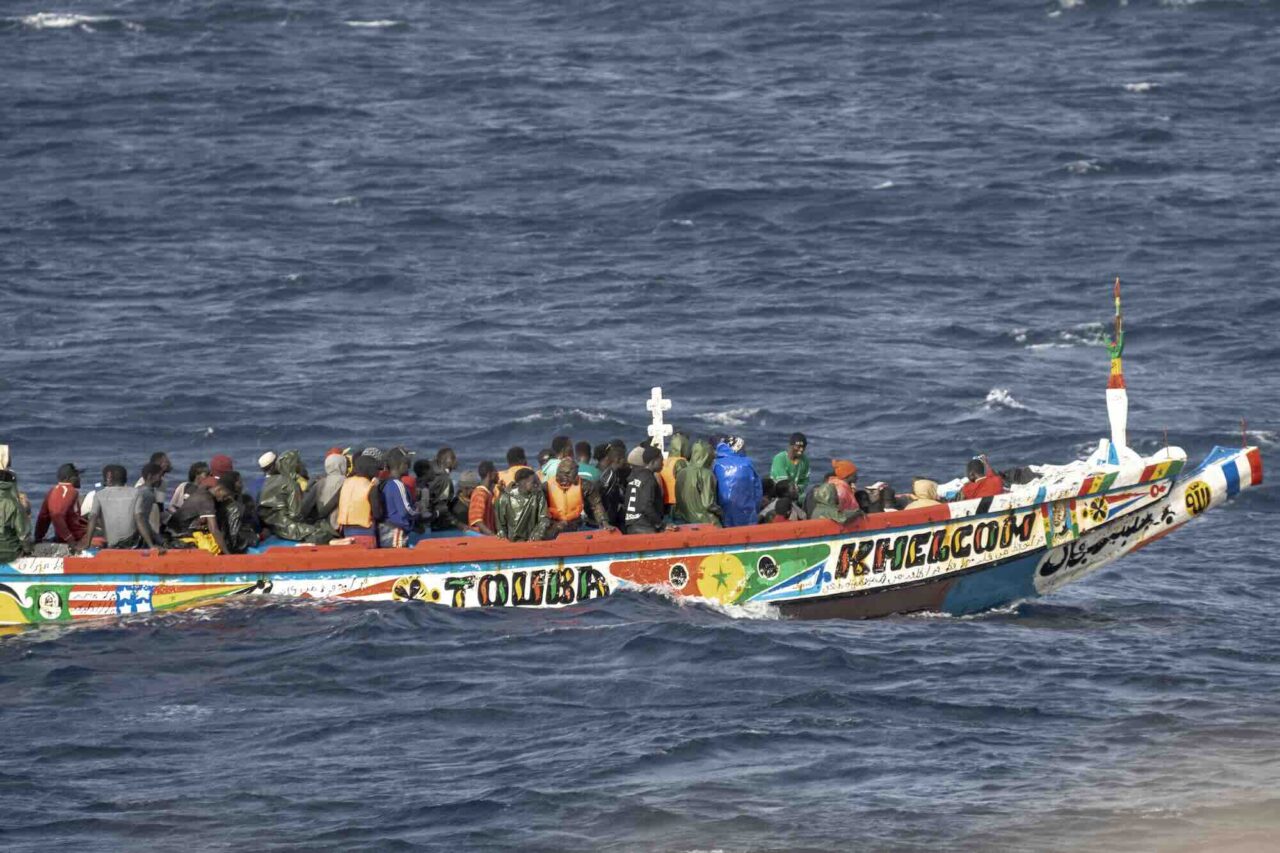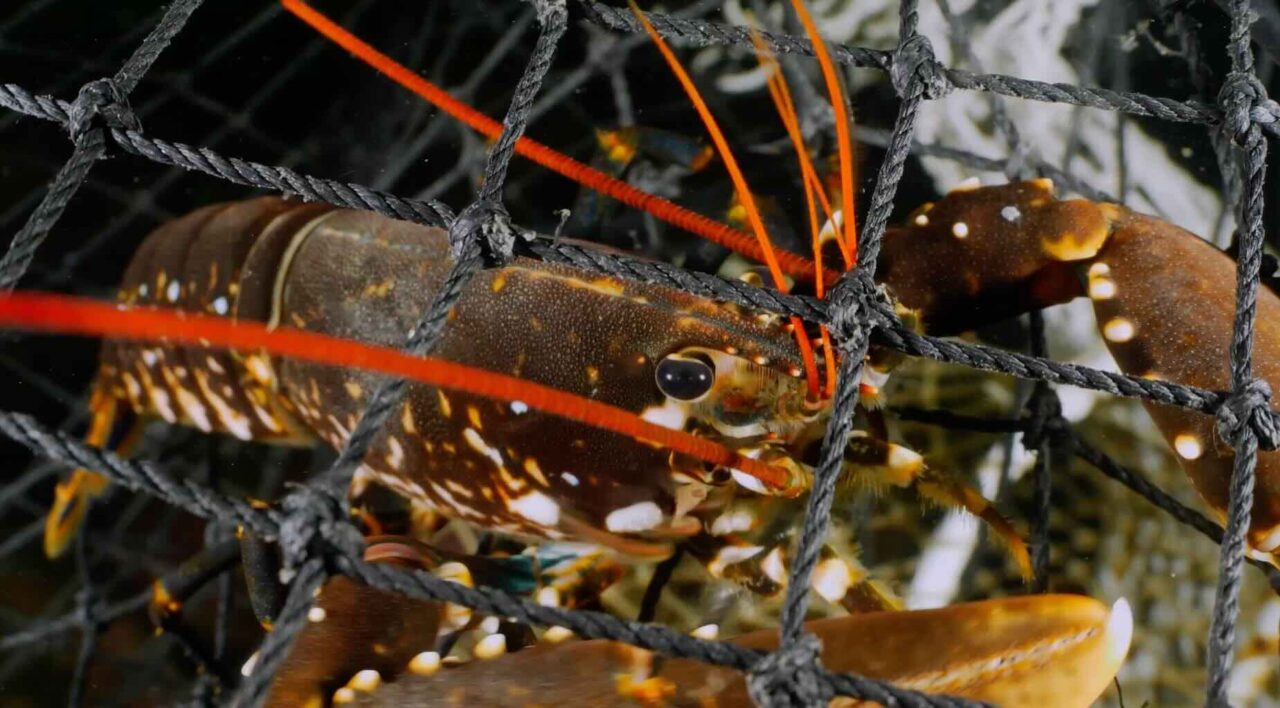Every year, large amounts of fishing equipment are lost in the sea. In many cases, the equipment continues to fish without anyone taking care of the catch – so-called ghost fishing. On the West Coast, lobster tins pose the big problem and it is estimated that thousands are lost annually. Along both the west and east coasts, however, several projects are underway aimed at cleaning the ocean from these death traps.
Karin Martinsson, Robin Wolf and Tommy Berntsson work in the project 8+Fjords, which is a collaboration between Kungälv, Orust, Stenungssund, Tjörn and Uddevalla. Together, the municipalities implement measures in line with the national environmental goals A sea in balance and A living coast and archipelago. En av åtgärderna är att städa, eller ”dragga”, havsbotten från hummertinor och annan fiskeutrustning som fiskare av olika anledningar förlorat. Wolf says that the majority of the tools are lobster drums at a depth of about 40 meters, where, among other things, the lack of sunlight causes the equipment to degrade slowly.
“We find very old lobster drums that are still in good condition. A thaw had lain for eight years and looked like new. It was completely closed and contained a lot of shells, so it has certainly killed a few hundred crabs in its years, and a few lobsters.
When an animal gets stuck and eventually dies in the lobster tin, it starts to smell and attracts more animals. På så sätt ackumuleras spökfiskeeffekten. Something else that contributes to the problem is that many lobster fishermen close their pots with cable ties to be able to detect if someone is stealing from them.
– Men varenda en som åker ut för att tjuvfiska har ju en kniv med sig och kan lika gärna öppna buntbandet, sätta tillbaka ett nytt och kasta i hummertinan igen. So it’s just silly.
By instead sealing their pots with cotton thread, which dissolves after about 90 days, escape routes can be created for the animals that get stuck in the equipment.

Several reasons why equipment is lost
The disappearance of lobster tins and other fishing equipment into the sea is due to several factors. Among other things, the location is crucial, says Martinsson.
“If you place them near shipping lanes, for example, few, there is a risk that the well-being will be cut off. Then it will be very difficult to get them up again.
Another explanation, according to Wolf, is that many lobster tins weigh too little and that the ropes are tightened too tightly at the sea surface, which makes them easy to follow the ocean currents and get tangled up in each other.
“That’s how we find the vast majority, in large tangles. There can be 100 pots in a large ball. If it gets so heavy, we use a winch and pull it up towards land.
Det finns flera metoder för att lokalisera fiskeutrustning på havsbotten. To begin with, an inventory is made when the lobster fishery is in progress. The towing is then concentrated in areas in or near shipping lanes where many pots have been placed and where it is energized. After that, technology in the form of sonar and underwater drones is very helpful.
“When we look over where we suspect that many pots are located, we usually drive over the area with the sonar. It’s so good that we can see if there’s a lobster on the bottom,” Berntsson says.
In cases where the name and telephone number are specified and discernible, the owner is contacted for pick-up. The rest of the fishing equipment is driven to the marine recycling center in Sotenäs.
Challenges remain
There are also organizations that work voluntarily to pick up lost fishing gear. One example is Divers Against Ghost Nets, which operates in the area between Gothenburg and Lysekil. The initiators are a group of recreational divers, who already in 2008 began to note lost fishing equipment on the seabed. Sedan dess har de plockat upp stora mängder hummertinor, ryssjor och nät och 2019 bildades föreningen i sin nuvarande form. But diving for fishing equipment is not entirely risk-free, says chairman Paul Hultsbo.
– Både säkerhetsmässigt, hur man får upp det till ytan och vart allt ska göras av, hela organisationen runt omkring.
The organization’s requirement for diving after lost fishing gear is to have previously undergone about 100 dives in Nordic waters. Recently, like 8+Fjords, they have also started using sonar and underwater drones to streamline operations. Found ghost fishing gear is handed over to the owner, police or recycling.
According to Hultsbo, a number of challenges remain and he describes Norway as an example when it comes to preventing ghost fishing. Among other things, they have introduced requirements to register their lobster drums and label them with names and phone numbers. If a thaw is found ghost-fishing, the owner gets a bot sent home.
” It becomes an automatic incentive to report your lost tools.
At present, it is not regulated where lobster drums can be placed, which is one reason why many are lost. All of the interviewees agree that such rules are needed, as well as requirements for cotton thread and a sign on the tools with the owner’s name and telephone number.
– Vi ser gärna att Havs- och vattenmyndigheten skärper upp reglerna och slår följe med den Norska modellen, säger Hultsbo från Divers Against Ghost Nets.
Time-consuming processes
Lisa Bredahl Nerdal arbetar som utredare inom marint skräp på Havs- och vattenmyndigheten i Göteborg. Hon beskriver att myndigheten arbetar med frågan på flera plan – internationellt såväl som nationellt. The foundation for the work being conducted in Sweden today was laid in 2017 in connection with the Marelitt Baltic project.
“Then the countries around the Baltic Sea came together and identified where tools are located, how we should address them in the best way and what care is best in ports.
Sedan dess har myndigheten bland annat utvecklat verktyget GhostGuard, dit vem som helst kan rapportera förluster och fynd av fiskeutrustning. Another important part of the work is the financing of pulling efforts.
In order to prevent the loss of tools, the authority works with information efforts, as well as to develop and increase the responsibility of producers. However, getting through rules for, for example, the placement of tools is a more complicated process.
“It’s a harder nut to crack, because it’s about fisheries legislation. Sådana här frågor måste gå ut på remiss så att folk får tycka till, vilket är en anledning till att det tar lång tid.
However, Bredahl Nerdal underscores that the ball is rolling and the authority is working to review which instruments are most effective in preventing lost fishing gear. The fact that the issue has come to the fore in recent years has also meant that the authority has received increased funds to work with it.
“These are new tones and it makes it easier when we investigate these issues.
The Swedish Agency for Marine and Water Management’s website on marine litter contains more information about the work with lost fishing equipment.




